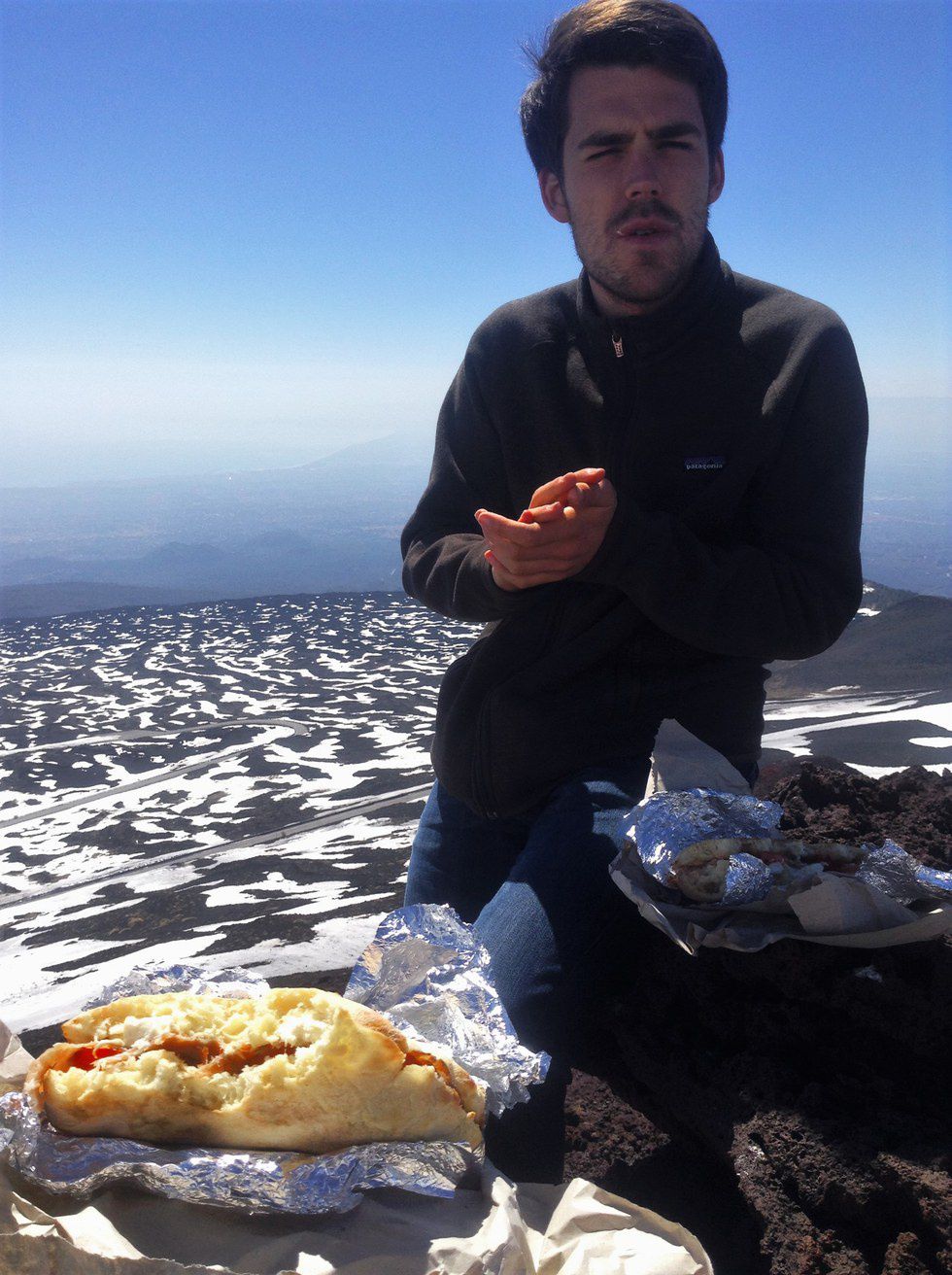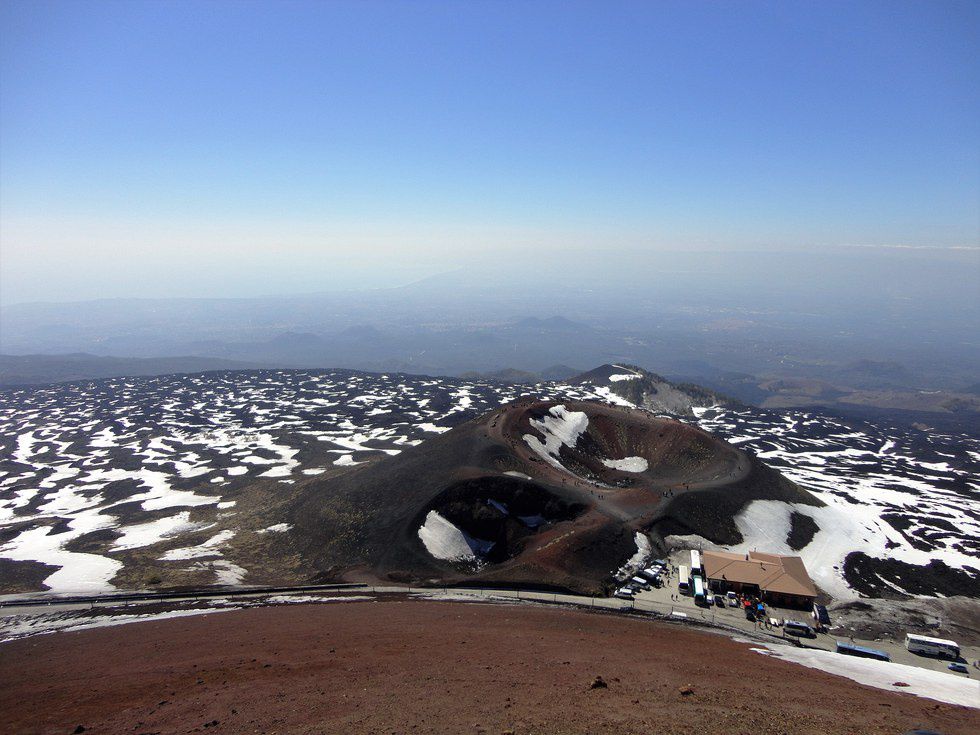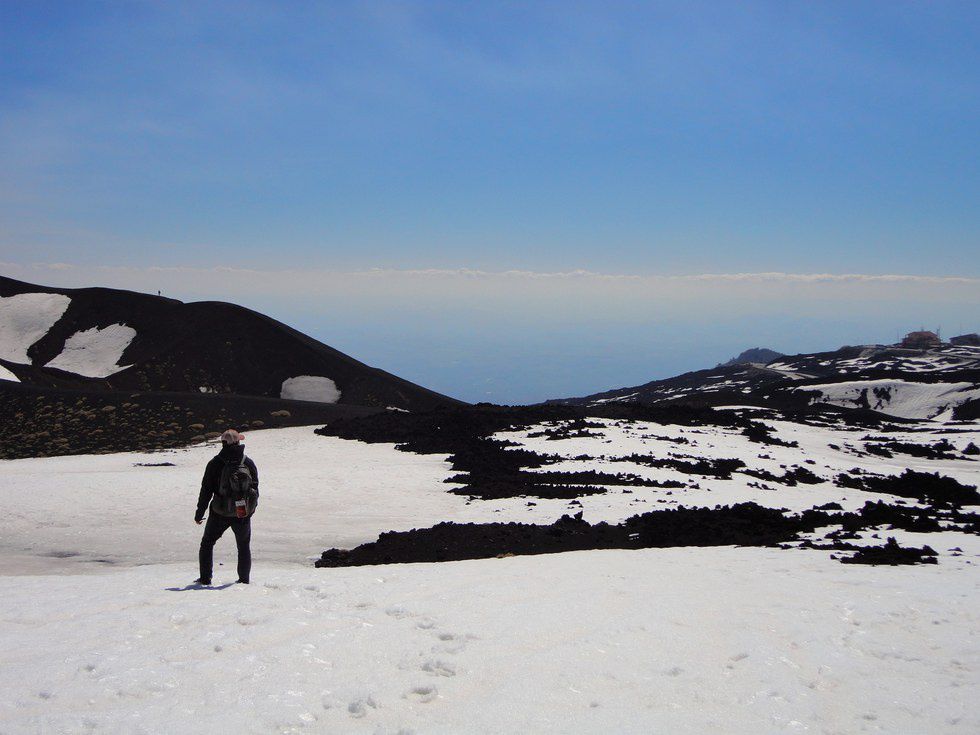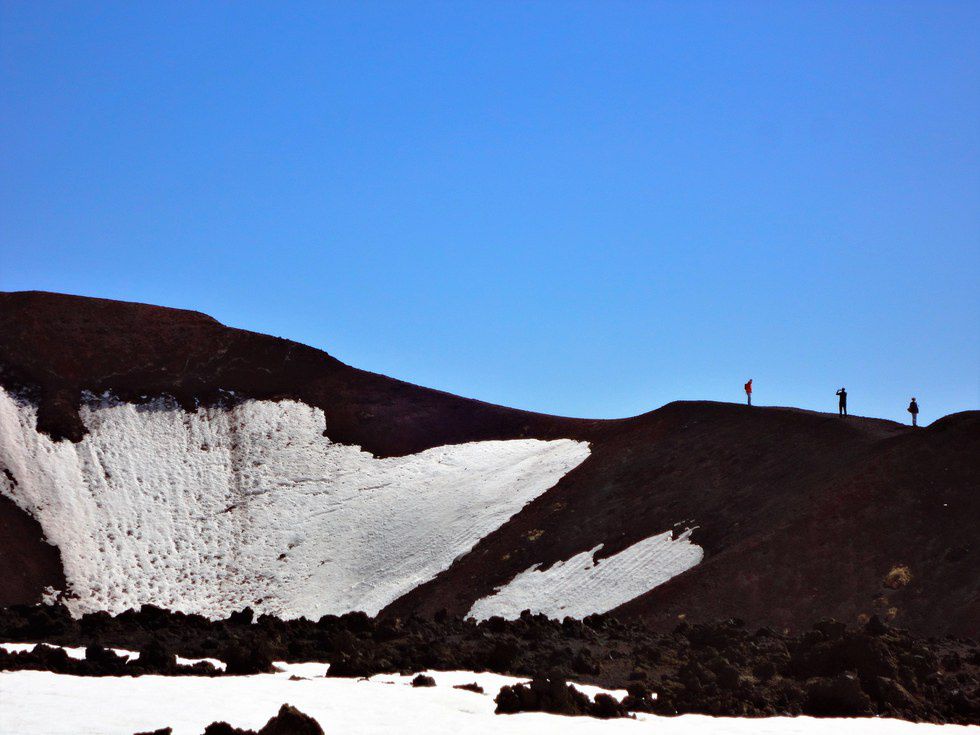As if Italy didn’t have enough breathtaking landscapes, historic landmarks and delicious food, it also lays claim to Europe’s tallest active volcano – Mt. Etna. At 10,991 feet above sea level, Etna towers over the lush, green Sicilian landscape. It’s located in the province of Catania, which is Sicily’s second largest city, behind Palermo. With views of the Ionian Sea, the city of Catania and beyond, the trip to Mt. Etna is well worth the visit if you are lucky enough to find yourself planning a trip to Sicily.
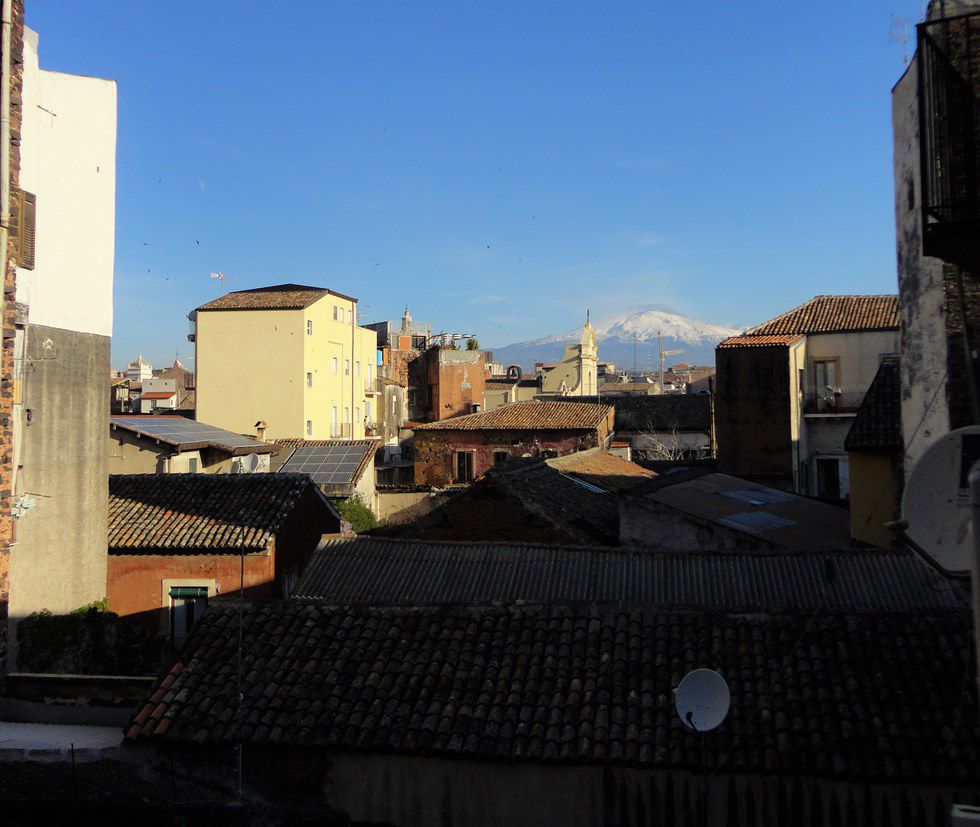
The city of Catania itself is not all too intriguing from a tourist's standpoint, but it does give you an opportunity to see traditional, southern Italian life. We stayed in an Airbnb by the Castello Ursino ("Bear Castle"), which was a sublime location. The surrounding streets had plenty of trattorias and osterias, and we were close to Giardino Pacini park, where a daily fish market is held from 8 a.m. until about 2 p.m.

Here you can find all kinds of fresh fish, meats, fruits and veggies, as well as getting a feel for what a typical Italian market looks like. You can also do a few walking tours to check out some other sights and monuments, but the real attraction, at least for me, was hiking Mt. Etna.
The drive to Mt. Etna is just about two hours, so you can take the bus or hire a car depending on your budget. My friend Teddy and I had study abroad budgets, so we chose to take the bus, which costs about €6 round trip. Sticking to the theme of the study abroad budget, we woke up around 7 a.m. to make the 20-minute walk to Piazza Papa Giovanni XXIII, which faces the beautiful arches of the Catania Centrale railway station.
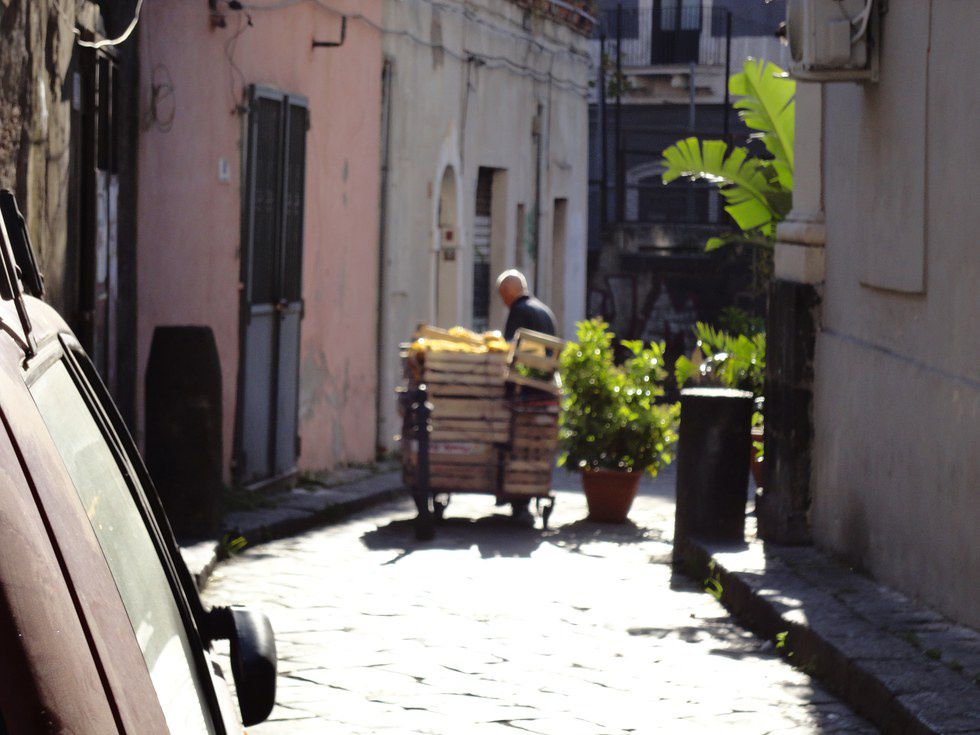
As a side note – I strongly recommend walking around Catania; the streets are beautiful and everything is so close that taking a taxi is not worth missing seeing the old men playing chess in the parks or the charming boutiques that line the sidewalks.
The bus is an AMT (public transit) bus, so you can get the ticket in a shop adjacent to Piazza Giovanni – we had to ask around, but found it quickly thanks to the hospitable nature of the Sicilian people. The 8:15 bus, we knew, would make a short stop along the way in Nicolosi, a tiny town nestled in the foothills of the imposing Etna. We figured it would be much cheaper to buy lunch there and bring it with us, so I set off up the street, with the 20-minute countdown ticking away. Luckily I found Salumeria Terra Nostra about a block up on the left. I highly recommend stopping here to get a fresh sandwich that’s bigger than your face (seriously) for about €4.
(Salumeria Terra Nostra Sandwiches; Etna Sud, Italy)
The tomatoes were perfectly ripe, the buffala (mozzarella) was pillowy goodness and the salami and prosciutto were tangy. Please stop here to get your lunch instead of overpaying higher up the mountain – your taste buds will thank you and so will your wallet.
From Nicolosi it’s only another hour along the recently rebuilt roadway that carves through the volcanic aftermath of ruined dwellings and magnificent walls of solidified lava turned igneous rock.
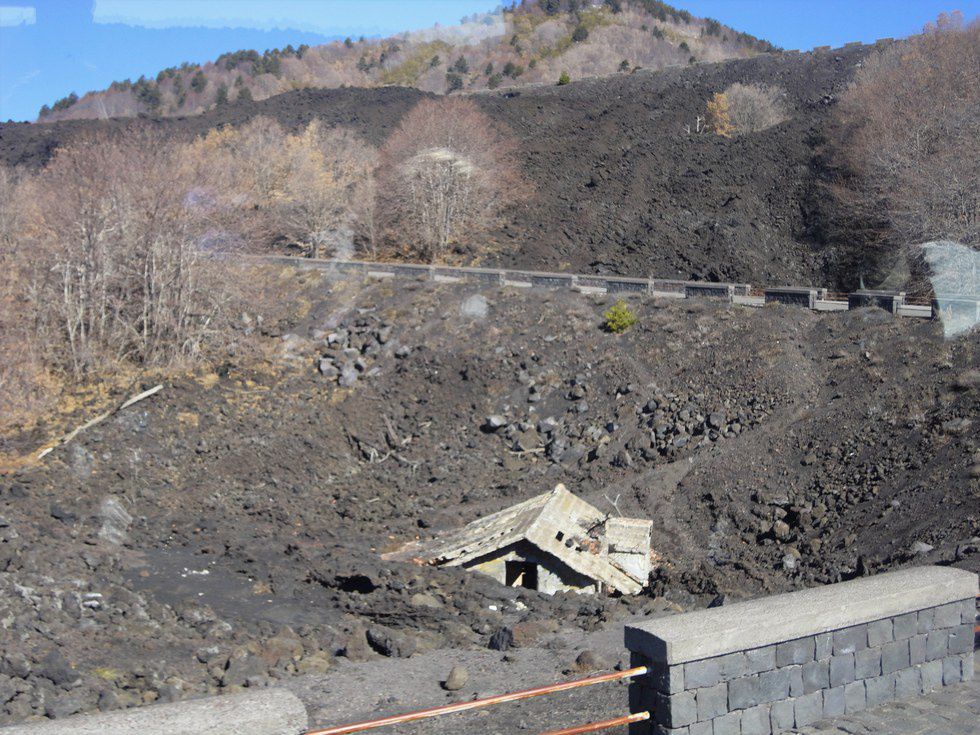
The bus driver was exceptionally kind and helpful, giving us a brief history lesson (in Italian) on Mt. Etna as we climbed up the mountain. The destination, known as Rifugio Sapienza, features a hotel, a few stores and a few restaurants. It’s not quite at the peak, but it’s a great place to hike around, or even to ski (yes, you can actually ski there), the south face of the volcano.
(Rifugio Sapienza; Nicolosi, Italy)
In true Italian fashion, there are few restrictions or precautionary measures for tackling the alien, volcanic landscape. You can take a gondola further up the mountain, or just start hiking around; we chose the latter.
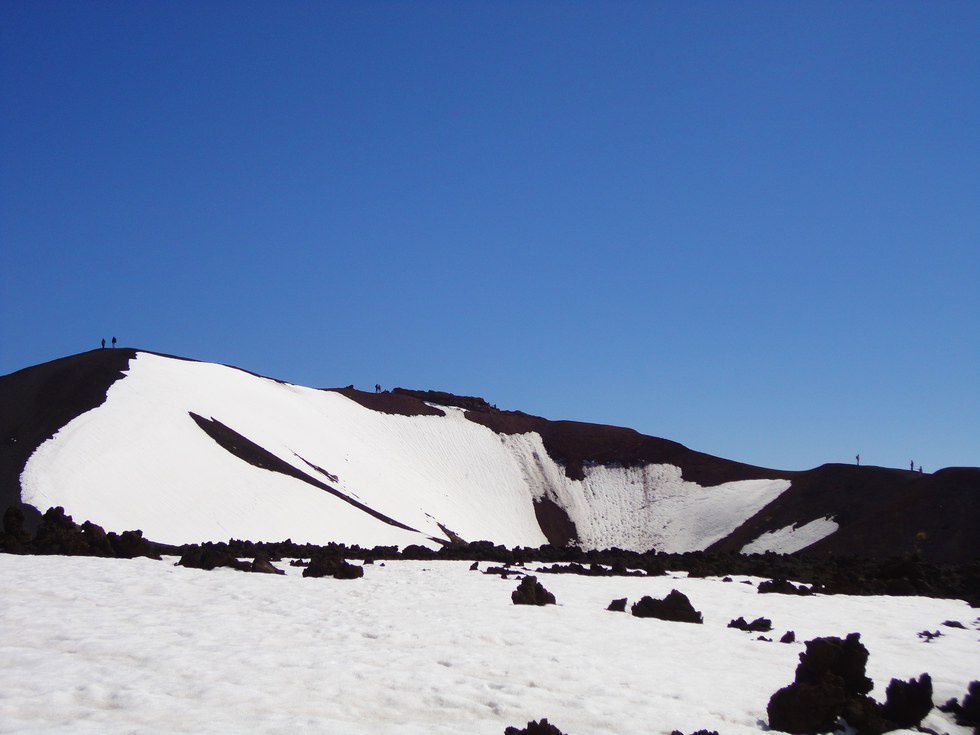
In late April there was still plenty of snow on the ground, but the powerful sun and radiating heat from the ground assured that we were pleasantly warm. The volcanic rock was loose and fragmented, which made walking a demanding exploit. But, reaching the top of the first crater made the pain in our quads just an ephemeral trifle in an awe-inspiring excursion across the lunar landscape of Etna’s south face.
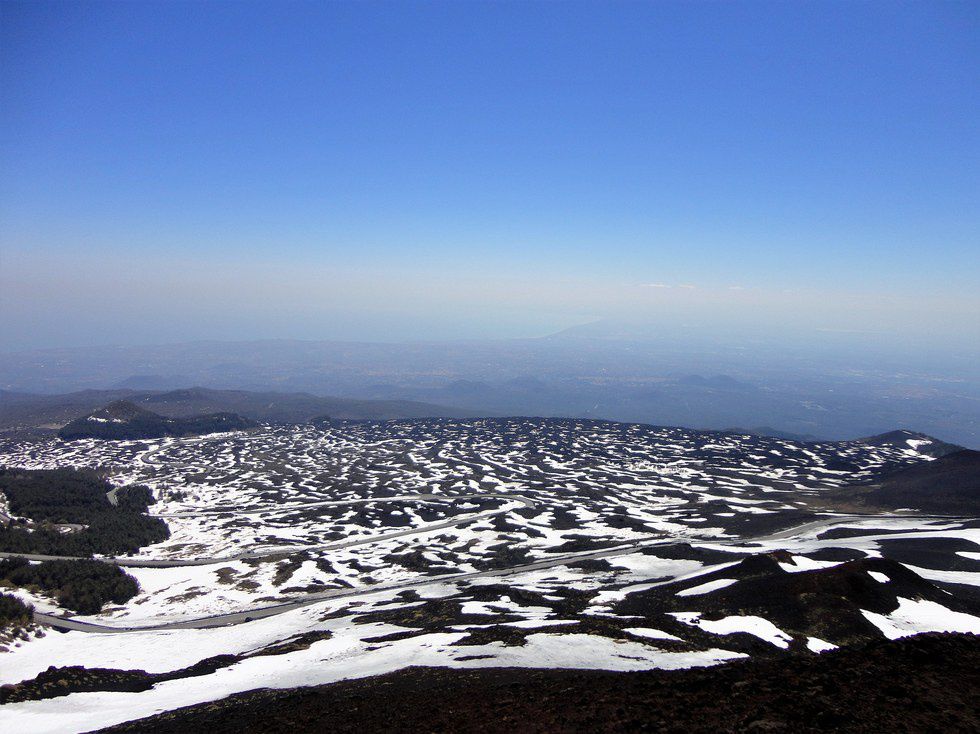
We decided to hike higher up the mountain to a crater with no other people; a journey that proved more laborious than anticipated, due to the steep slope and the loose, snowy surface. At the top of the second crater we were surprised to encounter two friendly Englishmen, who departed shortly after we arrived. With the crater summit to ourselves, we plopped our backpacks down, sank our teeth into our enormously divine sandwiches, and enjoyed the view!
(Lunar Landscape of Mt. Etna; Mt. Etna, Italy)
Teddy and I decided to camp out there for the rest of the afternoon, making videos, taking pictures and simply basking in the warmth of the sun while surveying the miles of visible coastline, forests and the city of Catania.
(View from Mt. Etna; Mt. Etna, Sicily)
The bus back to Catania leaves at 4:30, with or without you, so make sure it leaves with you. With a total stay of about six hours from when the bus arrives, to when it leaves, I’m not sure if there is time to visit the actual Etna peak, but it could be worth it to find out. From my own experience, however, I do know that you can have an unforgettable day hiking around the craters and slopes just above Rifugio Sapienza.
(People on the ridge of a crater; Mt. Etna, Italy)




